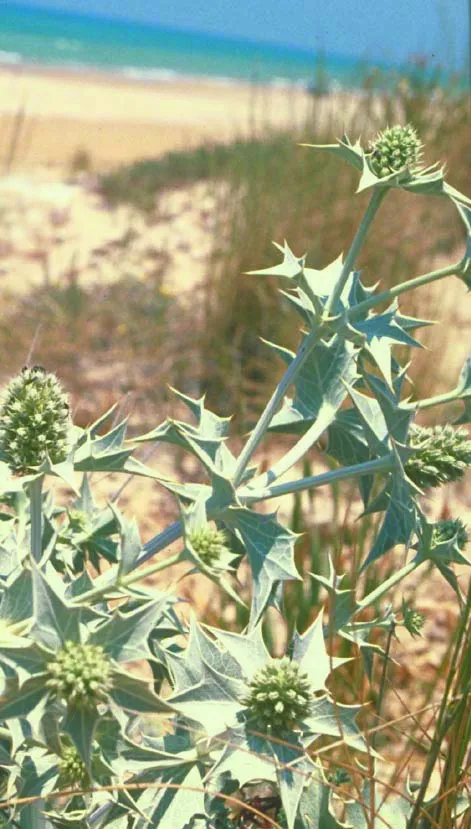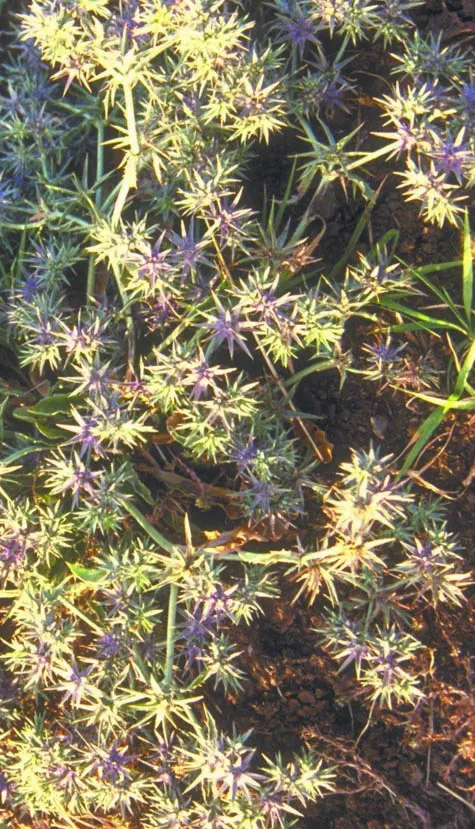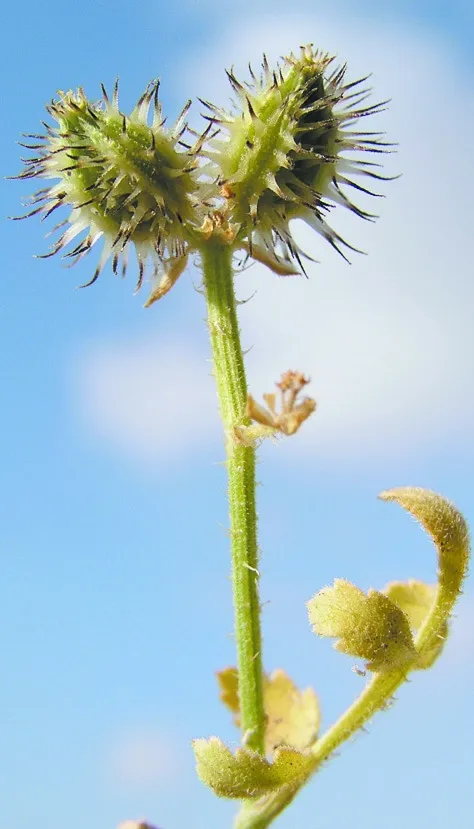Bishop's Weed, Ajowan Caraway
Trachyspermum ammi
Trachyspermum ammi was recently found only at one site in the Judean Mountains, in Mitspe Yair in the southern
Hebron Mountains (Oz Golan, 2004). In the past (the 1930s) M. Zohari collected a
single plant on Mount Scopus but it is now extinct there.
Arid Mediterranean scrublands.
The genus Trachyspermum numbers 20 species
growing in tropical regions and from northeast Africa to India and China. Trachyspermum
is extremely close to the spice herb Carum carvi (caraway). Its fruit
is used as a spice (ajwain) and in folk medicine from China and India to the Horn
of Africa (Small, 1997). Trachyspermum seeds contain many active ingredients that have
anti–oxidant activity. The plant is currently being studied but not enough clinical
trials have been conducted to approve its use in the modern pharmaceutical
market (Tucker, 2009). Essential oil extracted from the seeds of Trachyspermum contains about 50% thymol and
therefore give off a thyme smell (Tucker, 2009).
As mentioned, the plant is known around the world only as
a cultured plant. This makes the fact that in Israel the species was collected
in natural scrubland very significant, as these may the only wild populations
of T. ammi in the world. On the other hand, the few plants that
were found in Israel may be surviving remnants of ancient agricultural cultivation
of the species. Zohari notes in the
Flora Palestina that the single plant collected from Mount Scopus differs from
the cultured plant by its leaves, whose branches and leaflets are arranged in
threes and by its short pedicels. These features were also observed in the
population found in the southern Hebron Mountains. It is important to compare
the chemical structure of the wild population seeds in Israel with those of the
cultured plant, as this may be a strain suitable for cultivation, which could be
used in the future to introduce various resistances in cultured strans, such as
resistance to drought, salinity or diseases.
Trachyspermum
ammi grows only on one site; there is very little
information on it and no sufficient data available to analyze its conservation
aspects.
Searches for Trachyspermum ammi
should be conducted in additional locations in mountainous regions. The single
known site in Mitspe Yair should be documented systematically and comprehensively.
Trachyspermum ammi
is known in the world only as a cultured plant,
particularly in the Middle Eastern countries, the Horn of Africa and eastwards
to Central Asia and India.
Trachyspermum
ammi is an extremely rare annual species that was recently documented only in one site in the southern Judean Mountains. Because there is little available
information about it, the main recommendation is to conduct consistent and
detailed documentation.
Small, E. 1997. Culinary Herbs. NRC Research Press. pp. 189.
Tucker, A.O. 2009. The Encyclopedia of Herbs. Timber Press. pp. 492-493.
Current Occupancy Map
| 1000 squre meter pixel | 5000 squre meter pixel | 10000 squre meter pixel | |
|---|---|---|---|
| number of observations | 0 | 0 | 0 |
| in total pixels | 0 | 0 | 0 |
| Family | Apiaceae |
| Classification | On the episodial species list |
| Ecosystem | Semi-Steppe Belt |
| Chorotype | Eastern Mediterranean |
| Conservation Site | Mitspe Yair on the Ma'on geographic region |
| Rarity |
1
6
6
|
|---|---|
| Vulnerability |
0
0
4
|
| Attractiveness |
0
0
4
|
| Endemism |
0
0
4
|
| Red number |
1
3.2
10
|
| Peripherality | 0 |
| IUCN category | DD EW EX LC CR EN VU NT |
| Threat Definition according to the red book | Vulnerable |
 Based on:
Based on:






